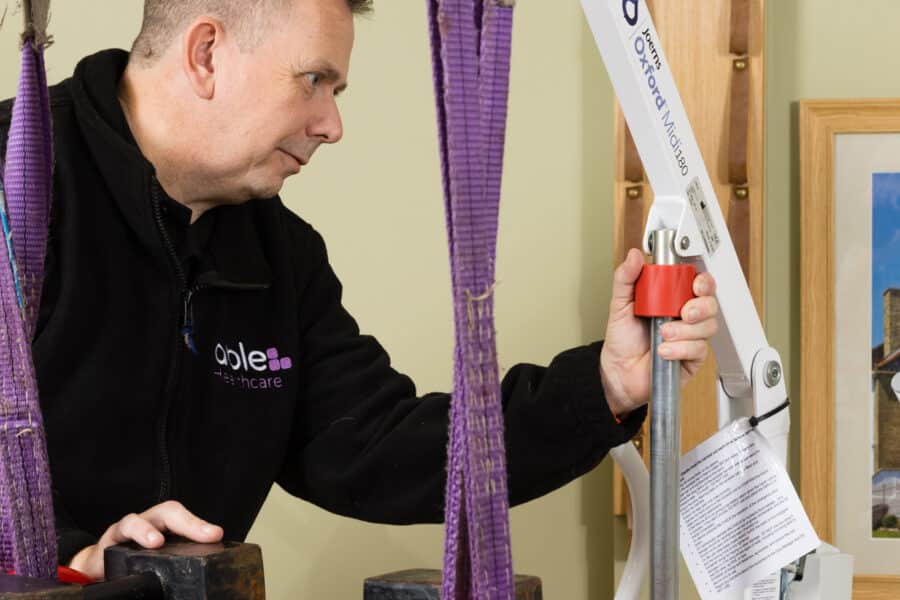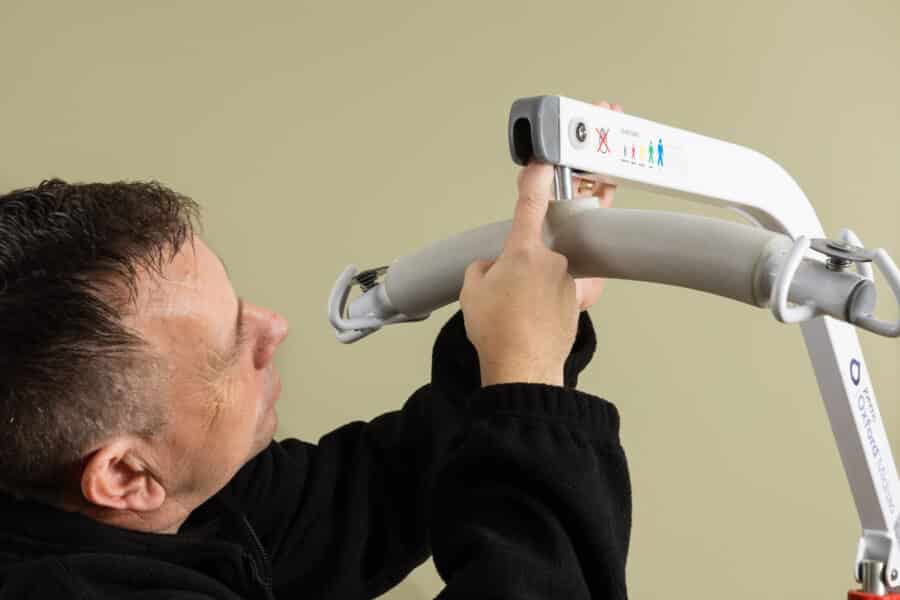Keeping wheelchairs clean and hygienic is vital in any care home setting. Regular cleaning not only helps prevent the spread of infection but also prolongs the life of equipment and supports resident dignity. With multiple staff handling mobility aids and frequent resident use, having a structured wheelchair cleaning checklist for care homes ensures nothing is overlooked.
In this guide, we provide a detailed cleaning process, share best practices, and highlight the key reasons why a proper routine is more than just good housekeeping—it’s essential care.
Why Wheelchair Cleaning Matters in Care Homes
Unlike personal homes, care facilities handle multiple wheelchairs daily. These aids come into contact with various surfaces, people, and bodily fluids. Without routine cleaning, they can quickly become a source of cross-contamination.
Moreover, regulatory inspections now pay close attention to equipment hygiene, especially in environments caring for vulnerable individuals. Implementing a structured wheelchair cleaning checklist shows due diligence—and keeps your care home compliant.
Your Essential Wheelchair Cleaning Checklist
Below is a straightforward, step-by-step list to integrate into daily or weekly cleaning routines. You can adjust the frequency based on usage and risk levels.
Daily Tasks
-
Wipe down high-contact areas: Clean armrests, brakes, handles, push rims, and seating surfaces using a non-abrasive, disinfectant wipe or solution approved for healthcare use.
-
Check for visible dirt or spills: If needed, spot-clean fabric or vinyl upholstery immediately using a mild detergent and warm water.
-
Sanitise footrests: These often get overlooked but can carry significant bacterial load.
-
Inspect tyres for debris: Remove hair, fluff, or dirt that may have wrapped around axles or wheels.
Weekly Deep Clean
-
Disassemble removable parts: Clean under seat cushions, detach footrests, and wipe all hidden areas.
-
Use a mild disinfectant spray: Avoid bleach unless the manufacturer confirms it’s safe for materials. Focus on joints, undercarriages, and wheel locks.
-
Dry thoroughly: Avoid moisture build-up, especially on foam seats or in tight corners.
-
Check for signs of damage: Loose bolts, worn grips, or squeaky brakes should be flagged for maintenance.
Monthly Maintenance and Safety Checks
While cleaning helps keep wheelchairs hygienic and looking presentable, regular maintenance ensures they remain safe and functional. In a care home setting, you should carry out monthly checks as a minimum, with more frequent inspections for high-use wheelchairs or those used by bariatric residents.
Here’s what your maintenance checklist should include:
1. Review the Maintenance Log
Keep a centralised record of all wheelchairs in use, including:
-
Purchase date
-
Model and serial number
-
Last service date
-
Any faults reported
-
Repairs or parts replaced
We recommend updating this log monthly, and ensuring that any wheelchair used daily is professionally serviced at least once every 12 months—more often if it’s used intensively or outdoors.
If you’re unsure when your next service is due, book a LOLER-compliant inspection with our team.
2. Inspect Frame and Structural Integrity
Look for:
-
Cracks in welds or joints
-
Bent tubing or rust
-
Unusual sounds when the chair is moved
If anything seems unstable, take it out of service immediately and arrange a professional inspection.
3. Check Brakes and Wheels
-
Push each brake firmly to ensure it locks securely on each wheel.
-
Spin the wheels—do they roll smoothly? Any squeaking or wobbling could indicate worn bearings or misaligned axles.
-
Ensure caster wheels swivel freely and aren’t clogged with debris or hair.
If repairs are needed, our equipment supply page has parts and accessories to restore safe function quickly.
4. Assess Upholstery and Seat Supports
-
Check for sagging seat cushions, torn upholstery, or cracked vinyl covers.
-
Replace as needed to maintain posture support and comfort.
-
Foam-insert seats, in particular, should be replaced regularly to avoid pressure injuries.
You can browse replacement seating options and wheelchair accessories here.
5. Test Footrests and Arm Supports
These should:
-
Fold or swing away smoothly
-
Be firmly attached with no looseness
-
Show no signs of rust or excessive wear
If they’re rattling or stiff, lubrication or part replacement may be needed.
Best Practices to Support Hygiene and Compliance
To keep your care home running efficiently and safely, follow these tips in addition to your cleaning checklist:
-
Assign responsibility: Make sure cleaning is logged and staff know who is accountable for daily and deep cleans.
-
Train your team: Use visual aids and signage to reinforce the steps. COSHH training is also essential to ensure safe chemical handling.
-
Use purpose-built equipment: Avoid using general-purpose cloths and sprays. Opt instead for healthcare-grade solutions and disposable cleaning materials.
-
Keep spares available: If a wheelchair needs to be taken out of use for deep cleaning or repair, always have backup options ready.
Need Help Sourcing or Servicing Equipment?
Whether you’re replacing an old unit or looking for bulk supply, Able provides wheelchair equipment and accessories designed for demanding care environments. If you’re unsure what’s right for your setting, get in touch with us for tailored guidance.
We also offer reliable equipment servicing and PUWER/LOLER inspections, so you can stay compliant and confident.
If you’re setting up a new care home or updating an existing one, explore our complete equipment supply solutions for hoists, beds, and mobility aids.
Bonus Resource: External Guide for Staff Training
For additional context on wheelchair cleaning protocols, this CDC guide to cleaning and disinfection provides a useful general framework that staff may find helpful.
Final Thoughts
Implementing a consistent wheelchair cleaning checklist in your care home can drastically reduce infection risks, extend equipment lifespan, and help your team deliver a higher standard of care. With clear roles, quality supplies, and a regular schedule, maintaining clean and safe mobility aids becomes simple—and sustainable.
Need help organising your wheelchair cleaning process? Book a free call below.
Wheelchair Cleaning Checklist FAQ’s
2. How often should wheelchairs be cleaned in a care home?
High-touch areas should be wiped down daily, with a full deep clean each week. A monthly maintenance check ensures safety and functionality remain consistent.
3. What products should be used to clean wheelchairs?
Use healthcare-approved, non-abrasive disinfectant wipes or sprays. Avoid bleach unless confirmed safe by the wheelchair manufacturer, as it can damage materials.
4. Who is responsible for wheelchair cleaning in care homes?
Cleaning responsibilities should be clearly assigned to trained staff. Each clean should be logged to maintain accountability and compliance records.
5. What should be included in a wheelchair maintenance checklist?
Check brakes, tyres, upholstery, and frame integrity monthly. Record servicing, repairs, and inspections in a central maintenance log for traceability.
6. How can wheelchair hygiene support compliance during inspections?
Inspectors look for evidence of infection control and maintenance records. A clear cleaning and maintenance schedule demonstrates due diligence and regulatory compliance.
7. What services does Able Healthcare offer for wheelchair maintenance?
Able provides equipment servicing, PUWER/LOLER inspections, and supply of spare parts and accessories—helping care homes stay compliant and fully equipped.





